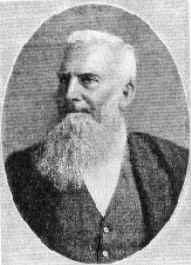
Charles Steedman (GBR/AUS)
Honor Pioneer Contributor (2000)
FOR THE RECORD: Author of first technical book on “Speed Swimming” (1867); First to define “streamlining” in swimming terms; First to reference the “crawl” relating to swimming; Swimming champion of England and Australia; Lived from 1830 – 1901.
On July 9, 1830 in London, England, Charles Steedman was born into a Dickensian world of gas-lit streets and horse-drawn carriages. 71 years later in 1901, he died in North Williamstown, Victoria, Australia. During his life Steedman became a champion swimmer in England and Australia, two countries more than 15,000 miles apart, an unusual achievement in the mid-19th century. But his contribution to international swimming was yet to come.
He was self-educated and excelled at everything he set out to do. At the age of eleven he began as a mapmaker, coloring maps. Two years later, he was a chemist’s assistant. At fourteen, he apprenticed to a cabinetmaker and attended evening classes to learn grammar and mathematics. At nineteen, he became a piano-maker, where his newfound knowledge of mathematics enabled accurate measuring and fitting of the spruce sound board. So successful was he in his new craft that he was said to be “proud at having to pay income tax”, a fact that enabled him to vote (Note: At the time, the so-called “working classes” were not entitled to suffrage, unless they earned enough to be taxed.)
Steedman learned to swim at the age of thirteen, and by age fifteen in 1845, he was a professional swimmer who already had won wagers in races around the countryside. At age nineteen, he won the championship of England from G. Pewters, a master of the sidestroke, a new racing style of the day. (It should be noted the sidestroke had become very popular because its superior body streamlining made it faster than the traditional breaststroke of the time.) Steedman didn’t train for races for the simple reason that after an arduous day of ten hours work, a light swim in the evening was all he could manage. Nevertheless, in 1852, and again in 1853, he beat Frederick Beckwith, nine years his senior, for the Surrey Club Championship, the event commonly regarded as the Championship of England, and kept the winning prize belt with him throughout his life.
Steedman immigrated to Australia in 1854 and became swimming’s first internationalist when he shared England’s more advanced knowledge of the sport with his new countrymen. He became champion of Victoria, and there published the first book on speed swimming. “Manual of Swimming” (1867) was the world’s first technical book on “speed swimming” and marked the beginning of swimming’s modern era. The practical value of the book was enhanced by the fact that the book was actually written with the authority of experience by one of the great competitive swimmers of the era. The book was later reprinted in 1873 in Steedman’s native London and it became internationally popular.
It is safe to say that Charles Steedman was the first notable contributor to the development of competitive swimming as a recognized sport, and his seminal work set the stage for the beginning of the modern era of swimming, later in the 19th century. As a respected member of the new Melbourne, Australia colony, his book was well received. The 270 page “Manual” as the book was popularly known, contained the first descriptions of racing strokes and how to train. His description of streamlining was a written first.
As swimming’s first internationalist, Steedman’s “Manual”, as it was colloquially referred to, became the world’s first reference to bathing, plunging, diving, floating, scientific swimming, training, drowning and rescuing written by an accomplished swimmer using available sound, scientific methods of the day to authenticate his beliefs. Steedman was “The Counsilman of the 19th Century.”
As a scientist, he used mathematics as a means to derive better speed results. “A rapid swimmer will have to exert an effective power equal to the cube of the power exerted by the other; hence the fleet swimmer, because of his greater expenditure of power, and because of the greater resistance he meets with as a consequence of that expenditure, cannot proceed in the water at a speed more than about double of that of the slow swimmer.”
He describes the North American Indians as swimming with an alternative continuous arm action which was a type of crawl stroke, predating a subsequent reference by at least 30 years. “Crawl” was the 19th Century term used to describe the dog paddle, as we know it today.
Large sections of “The Manual” are devoted to the need to bathe regularly and give accounts on how to rescue people. Few people at that time washed because few people could swim. He encouraged people to like the water and learn to swim. He mentions the high rate of drowning and importance of skilled swimmers to rescue people from drowning. Steedman rescued over 66 lives without gratitude or offer of award.
(Acknowledgments to Cecil Colwin, “Two First for Charles Steedman,” SwimNews, February, 1999.)
